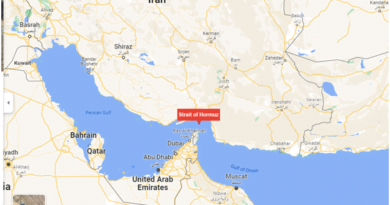L-Band and S-Band in Satellite Communication
Introduction
Satellite communication plays a pivotal role in our modern world, connecting people, enabling data transmission, and facilitating global navigation. Two crucial components of satellite communication are L-band and S-band frequencies. These bands have distinct characteristics and applications that are vital in various aspects of telecommunications, from military and space exploration to television broadcasting and weather forecasting.
Contents
Understanding L-Band and S-Band
L-band and S-band are segments of the electromagnetic spectrum, each characterized by specific frequency ranges and unique properties:
What is the L-band?
- L-Band i.e. Long band is a wavelength band adjacent to the Conventional band (C- Band)
- Frequency Range: L-band frequencies typically range from 1 to 2 gigahertz (GHz).
- This is at the top end of the ultra high frequency (UHF) band, at the lower end of the microwave range.
- Characteristics: L-band signals are known for their ability to penetrate various obstacles, such as vegetation and light precipitation. They have a relatively low susceptibility to interference from rain and atmospheric conditions.
- Applications: L-band is widely used in satellite-based services such as GPS (Global Positioning System), aviation communication, and maritime communication. Additionally, it is commonly used in mobile satellite services, including satellite phones, due to its ability to maintain connectivity in challenging terrains.
2. S-Band:
- Frequency Range: S-band frequencies generally fall between 2 to 4 GHz.
- Characteristics: S-band signals offer a balance between signal penetration and susceptibility to atmospheric interference. They are less affected by rain fade compared to higher frequency bands like Ku- and Ka-band.
- Applications: S-band is extensively utilized in various satellite communication services, including weather forecasting, military and defense communications, and space exploration missions. The National Oceanic and Atmospheric Administration (NOAA), for example, relies on S-band frequencies to collect critical weather data from its geostationary satellites.
Satellite Communication Applications
L-band and S-band frequencies find applications in different fields of satellite communication:
1. Global Navigation: L-band frequencies are central to global navigation systems like GPS, GLONASS, and Galileo. These systems provide accurate positioning and timing data for a wide range of applications, from navigation for smartphones and vehicles to precision agriculture and aviation.
2. Military and Defense: S-band frequencies are frequently used for secure and reliable military communications. They offer robust performance in various operational environments, including adverse weather conditions, making them essential for defense and security applications.
3. Weather Forecasting: Satellites equipped with S-band instruments are crucial for meteorological observations. They enable the collection of critical weather data, including cloud cover, precipitation, and temperature, which is essential for accurate weather forecasting and monitoring.
4. Space Exploration: Space missions, such as the Mars rovers and lunar explorations, often employ S-band frequencies for data transmission and communication with Earth. The reliability of S-band signals is crucial in ensuring the success of these missions.
L-band and S-band frequencies are fundamental components of satellite communication, each with its unique characteristics and applications. These frequency bands have revolutionized how we navigate, communicate, and gather data on Earth and beyond. As technology continues to advance, satellite communication will remain a crucial part of our interconnected world, with L-band and S-band playing pivotal roles in ensuring efficient and reliable communication in various domains, from civilian services to military and scientific endeavors.
Source: NRAO
About Ku and Ka Band
Ku-band and Ka-band are two segments of the microwave portion of the electromagnetic spectrum, each with distinct characteristics and applications. Here are the key differences between Ku-band and Ka-band frequencies:
Ku-Band:
1. Frequency Range: Ku-band frequencies typically range from 12 to 18 gigahertz (GHz).
2. Signal Quality: Ku-band signals offer excellent signal quality and relatively low susceptibility to rain fade (signal attenuation due to rain or water vapor in the atmosphere). This makes them suitable for high-data-rate communication applications.
3. Applications:
– Satellite Television: Ku-band frequencies are widely used for direct-to-home (DTH) satellite television broadcasting. Many popular satellite TV services, such as DISH Network and DirecTV, use Ku-band signals.
– Broadband Internet: Ku-band is used for broadband satellite internet services, providing high-speed internet access to remote areas.
– Weather Radar: Some weather radar systems operate in the Ku-band to detect precipitation and monitor weather conditions.
– Military and Defense: Ku-band is utilized for military and defense applications, including secure communication and surveillance.
Ka-Band:
1. Frequency Range: Ka-band frequencies typically range from 26.5 to 40 gigahertz (GHz).
2. Higher Frequencies: Ka-band operates at higher frequencies than Ku-band, which results in increased data transfer rates and greater potential bandwidth.
3. Susceptibility to Rain Fade: Ka-band signals are more susceptible to rain fade compared to Ku-band. The higher frequency makes them more affected by rain and atmospheric conditions, which can disrupt communication links in adverse weather.
4. Applications:
– Satellite Communication: Ka-band is used for satellite communication, especially for high-data-rate applications like broadband internet services. It offers a larger bandwidth, which allows for faster data transmission.
– Earth Observation: Earth observation satellites often use Ka-band for high-resolution imaging and remote sensing applications.
– Space Exploration: Some space missions, including those involving spacecraft and rovers on Mars and other planets, utilize Ka-band for data transmission.
– Milimeter-Wave Technology: Beyond satellite communication, Ka-band is also used in millimeter-wave technology for applications like automotive radar and 5G networks.
The primary differences between Ku-band and Ka-band are their frequency ranges, signal quality, and susceptibility to rain fade. Ku-band operates at lower frequencies, providing good signal quality and resilience to rain fade, making it suitable for satellite television and broadband internet. On the other hand, Ka-band operates at higher frequencies, offering increased data transfer rates and greater bandwidth but is more sensitive to atmospheric interference, making it ideal for high-data-rate satellite communication and advanced applications in Earth observation and space exploration.
Space, Science and Technology
Discover more from Simplified UPSC
Subscribe to get the latest posts sent to your email.



